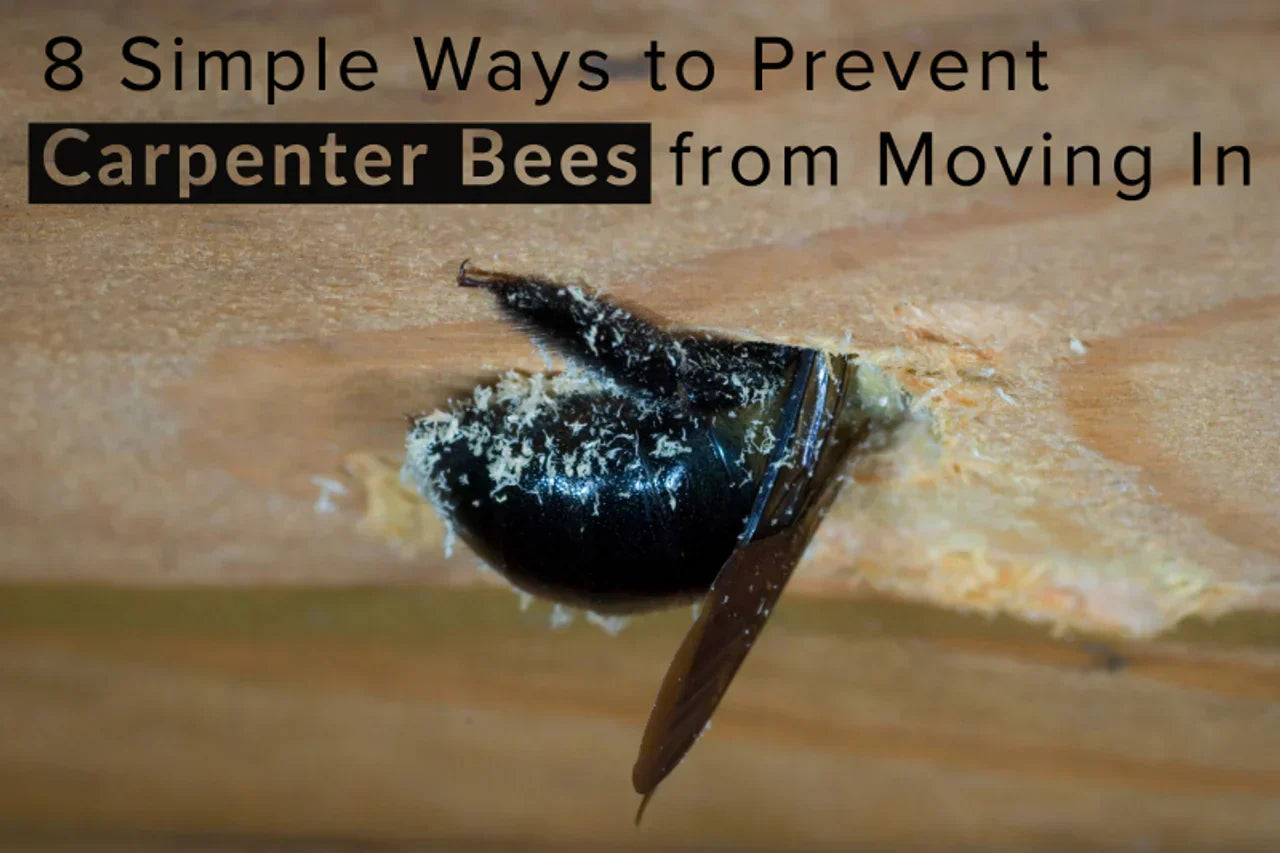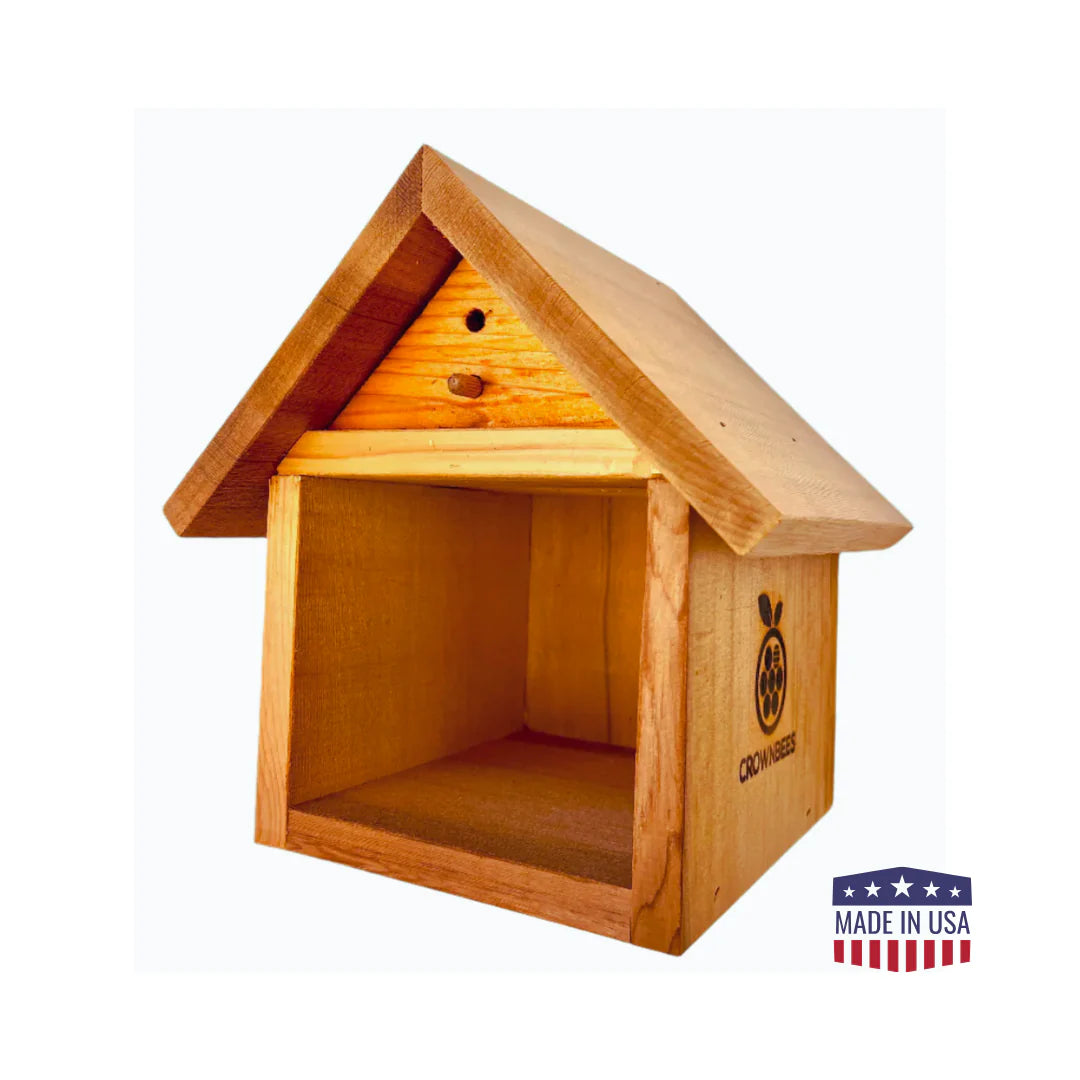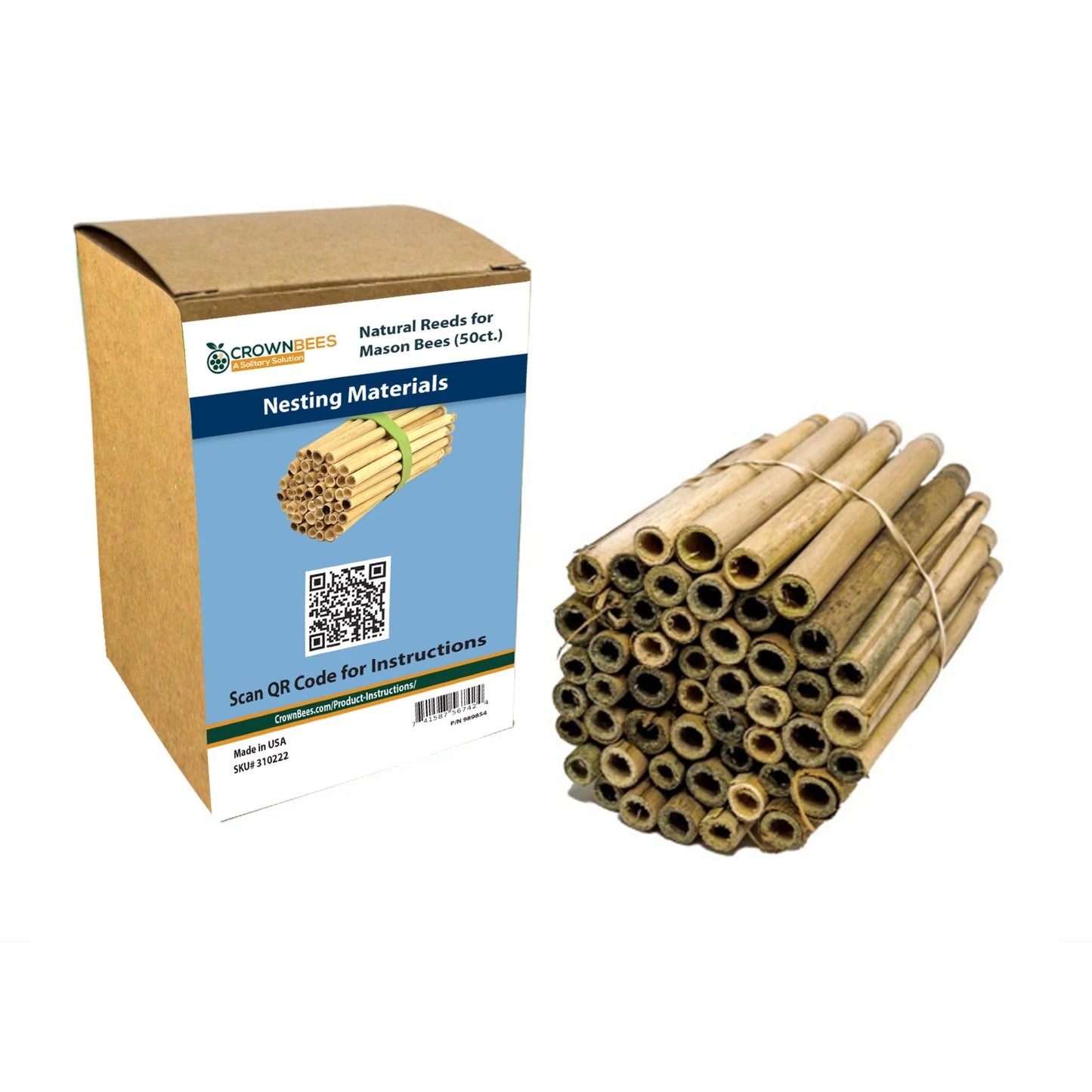
The sun is out; the flowers are blooming; the bees are buzzing — spring is finally here! However, sometimes the buzz of bees is not always a welcome sound, especially when you start to notice nickel-sized holes in your house or patio furniture.
These holes are likely caused by carpenter bees, appropriately named for their habit of drilling holes in wood. Unlike Mason bees and Summer Leaf bees (aka Leafcutter), which use existing holes to lay their eggs and do not cause damage to the structures they live in, carpenter bees are wood-boring insects that can cause moderate damage. It's important to note that carpenter bees do not eat wood like termites or carpenter ants. However, when they drill holes for their nests, problems like water retention, decay, and rot can occur if left unchecked for multiple years.
If carpenter bees have begun to appear, it can be tempting to use insecticides; however, we implore you to try less harmful techniques before reaching for the chemicals. Carpenter bees are effective beneficial pollinators. Any insecticide use can also harm other local pollinators. Learn how pesticides can move from yard to yard in our The Importance of a Pesticide-Free Yard article.
Many of our bee raisers have asked us what they can do to prevent carpenter bees from moving into their houses, decks, and lawn furniture without harming other resident pollinators. Which we thought was a great (and timely) question to answer in this month's bee blog post!
Identifying Carpenter Bees and Signs of an Infestation
Carpenter bees are the largest native bee species in the United States. They are typically all black, or black and yellow, and are frequently seen in spring hovering around the eaves of a house or the underside of a deck—the ones around my house routinely bump into our windows each morning to announce their presence.
Carpenter bees are often mistaken for bumble bees, but an easy way to tell the difference is that carpenter bees have shiny black abdomens, whereas bumble bees have hairy abdomens. Don't be afraid of their large size or seemingly aggressive nature! Males, which have white stripes on their faces, do not have stingers, and while females can sting, they are unlikely to do so unless you're handling them or sticking your fingers inside their nests (which we don't recommend).



There may be carpenter bees flying around your yard, but it doesn't mean they're drilling holes in your home. A few things to observe:
- Deep, nickel-sized holes perfectly drilled into wood
- Wood shavings or sawdust in and around the hole
- Carpenter bee poop may appear as yellowish-brown staining on the wood beneath the hole
- You may be able to hear faint chewing sounds inside the wood
- Males will often hover outside the nesting hole while the female is working inside
Bee-Friendly Remedies - How to Deter Carpenter Bees?
Prevention is the primary approach to managing carpenter bees! Typical carpenter bee nesting sites include eaves, rafters, fascia boards, siding, wooden shingles, decks, and patio furniture.
Prevention Techniques
- Carpenter bees prefer weathered wood, especially softwood such as redwood, cedar, cypress, and pine. If possible, use hardwoods to construct exterior areas susceptible to carpenter bee nests. They typically avoid hardwoods for nest building.
- Carpenter bees prefer unpainted wood. Paint, varnish, or pressure-treat exterior wood regularly to reduce weathering and deter bees from nesting.
- While carpenter bees are capable of building their nests from scratch, they can be opportunists and use existing cracks and depressions as starter holes. Fill any pits and gaps in wood surfaces so they are less attractive to bees.
- Provide homes specifically for carpenter bees. Do this by placing a few scrap blocks of wood around your yard. Some sources recommend providing large nesting holes or pre-drilling wood blocks for the carpenter bees. We're not saying this tactic won't work, but carpenter bees have evolved to be wood-boring bees, so we prefer giving them wood to drill their own nesting holes. This method keeps the bees around to help pollinate your yard and garden!
- If you find any unoccupied holes, you can fill them with steel wool and caulk to prevent their reuse. Wait until the new bees have emerged before filling the tunnels. Waiting allows your garden to reap the benefits of these fantastic pollinators—the damage is already done after all. Once filled, paint or varnish the repaired surfaces.
- Carpenter bees (and other social wasps) will avoid nesting in the same area as wasps. Try building a fake wasp nest. Inflate a paper bag, cinch the end closed, and hang the paper bag under the eaves of your house. While this technique deters carpenter bees from building new nests, it will not cause them to leave existing nests.
- Almond oil and citrus oil are helpful carpenter bee repellents. A good way to deter females from nesting is to spray a layer of almond oil/water mixture on any susceptible areas. Do this a few times throughout the spring to discourage bees from nesting. If bees have already taken up residence, you can apply a bit of oil directly to the nesting holes.
- Another strategy to encourage female carpenter bees to relocate by playing music or hanging a wind chime near the nest. The sounds and vibrations are disruptive to the bees and may inspire them to nest elsewhere after a few days of consistent noise.
We hope this post helps give you a few bee-friendly ideas to help prevent carpenter bees from becoming a nuisance! Remember, they are native, beneficial pollinators, and most of the time, we can avoid damage to our homes and furniture by using the preventive measures described above.
To stay updated on bee-raising tips and reminders, events, pollinator research, and sustainability insights, sign up for our twice-monthly BeeMail Newsletter and follow us on social media!


